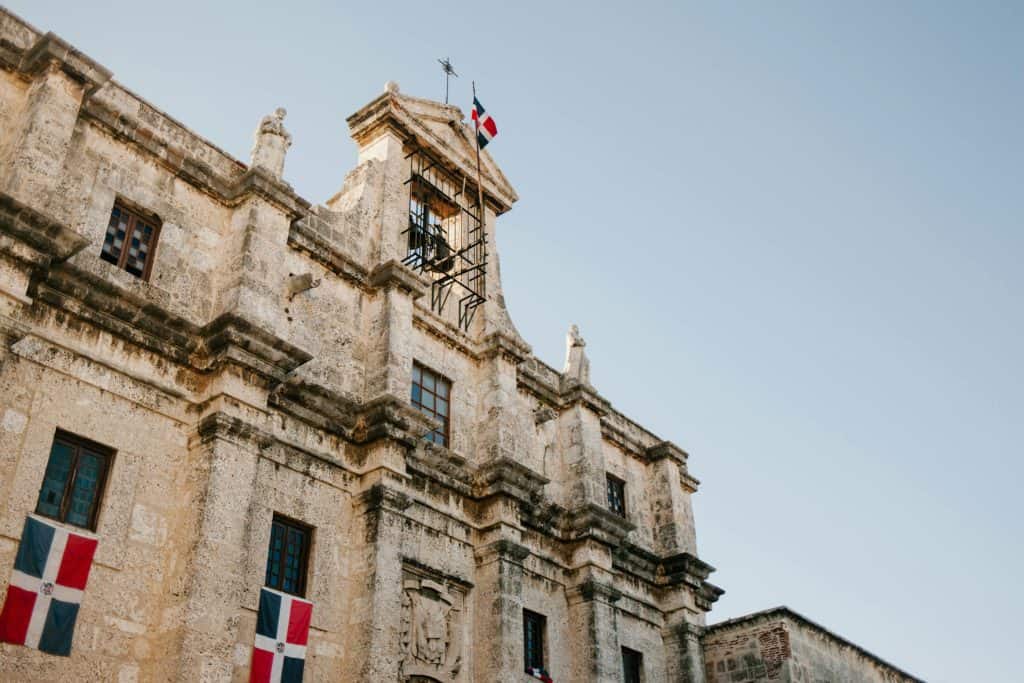Una primera cerveza en Medellín
No long-haul flight feels shorter than the one that ends with a cold pint. Last February I landed in Medellín, traded my carry-on for a pint glass at Cervecería 20Mission, and heard a paisa bartender ask, “¿De una, parcero, una IPA bien lupulada o más suavecita?” In that moment, all the grammar drills I had used to learn Spanish melted into the foam. I realized that beer vocabulary lives in its own aromatic universe; it demands adjectives and cultural references most textbooks skip. Ten years in the Dominican Republic had given me beach slang and bachata lyrics, yet describing citrusy hops or roasted malts in Colombia felt like opening a brand-new tab on my linguistic browser.
“Dame la lupulada,” I replied, praying I sounded more connoisseur than confused. The bartender flashed the knowing grin of someone who has guided many foreigners through their first local IPA. That first gulp whispered maracuyá and pine, and it also whispered: keep sharpening your ear; brew culture is a crash course in regional Spanish.
Hops, Malts e IBUs: la ciencia y el sabor
Colombian brewers take pride in balancing tropical fruit notes with altitudinal freshness. When you explore breweries in Bogotá’s Chapinero or Cali’s San Antonio, you’ll hear fans dissect lúpulos, maltas, and that mysterious acronym, IBU. If you still describe every beer as “fuerte” or “suave,” tasting rooms will stretch your adjectives. And that stretch is a playful way to learn Spanish as an expat, because you’re forced to match flavor precision with linguistic precision.
Cómo describir lúpulos sin parecer un manual
A hop-head in Cartagena once told me, “Este lúpulo Cascade es bacanísimo, te explota cítrico en la boca”—a sentence nowhere in my college syllabus. “Bacanísimo” in Colombia means “awesome,” closer to the Dominican “durísimo.” Notice the friendly exaggeration; Colombians love turning flavor into near-mythology.
Spanish example: “Ese aroma herbal de los lúpulos me enamora.”
English: “That herbal aroma from the hops has me in love.”
Context: Use “me enamora” when a smell or taste hooks you unexpectedly. Works as well for coffee or beachside sancocho.
El rol de la malta en la narrativa cervecera
Malt conversations lean toward warmth and nostalgia. A brewer in Santa Marta compared the caramel malt in his amber ale to “pan de bono recién hecho,” instantly anchoring flavor to Colombian bakery culture. In the DR I’d compare darker malts to “pan de agua” crust. Such cultural anchors turn tasting notes into mini-history lessons and help you learn Spanish in living color.
Spanish example: “La malta tostada le da un toque a pan sobao.”
English: “The roasted malt gives it a hint of buttery sweet bread.”
Context: “Pan sobao” is a moist, semi-sweet bread popular in the Caribbean; using it in Colombia sparks a friendly comparison of bakeries.
IBUs y la diplomacia del paladar
International Bitterness Units sound technical, yet locals discuss them with café-table passion. “Ochenta IBUs es una bomba,” a rolo friend proclaimed, while a Dominican buddy countered, “Eso allá, pero en Santiago bebemos IPA como agua.” The banter illustrates how numbers transform into personality contests. Mastering the metric teaches you to toggle between politeness and playful bravado—an underrated skill when you’re trying to learn Spanish as an expat who hops borders.
Spanish example: “¿De verdad aceptan más de 90 IBUs aquí?”
English: “Do they really serve beers over 90 IBUs here?”
Context: Useful when scanning the chalkboard menu and testing your spice tolerance—linguistic and gustatory.
Spanish in the Taproom: Phrases You Actually Need
Stools are taken, music is loud, and bartenders move fast. Survival Spanish says “una cerveza, por favor,” but microbrewery Spanish demands nuance. A confident order shows respect and earns insider stories about limited releases—stories that make your vocabulary fizz.
Ordering Like a Local
Smooth ordering rhythm: “Maestro, ¿me sirves media pinta de la IPA que lleva maracuyá? Quiero probarla antes de la porter.”
Translation: “Hey maestro, can you pour me half a pint of the IPA with passion fruit? I’d like to try it before the porter.”
Context: “Maestro” in Colombia equals “bro/buddy,” softer than the Dominican “hermano.”
Complimenting the Brewmaster
Praised beers taste better. After sampling a coffee stout in Bogotá I told the brewer, “La infusión de café está al pelo.” That phrase, “al pelo,” means flawless in Colombia; in Santo Domingo you might say “nítida.” This dance of synonyms keeps me humble and keeps me pushing to learn Spanish beyond tourist patter.
Spanish example: “Tu lager está tan limpia que se siente frutada.”
English: “Your lager is so clean it even feels fruity.”
Context: “Limpia” for beer equals “crisp” in English; no awkward translation needed.
Politely Disagreeing About Bitterness
You won’t love every pint. Expressing that gracefully deepens cultural rapport. Try: “Para mí está un poco subida de amargor, pero la espuma es impecable.” You’re balancing critique with praise, a skill that travels well from Barranquilla to Boca Chica.
Spanish example: “Quizá bajar un pelín los IBUs y queda redonda.”
English: “Maybe drop the IBUs just a tad and it’ll be perfect.”
Context: “Pelín” is casual, softer than “poco,” and signals you’re offering friendly feedback.
Example Conversation in a Bogotá Brewery
Camila (bartender, Colombia): ¿Qué más, parcero? ¿Buscas algo lupulado hoy?
Camila: What’s up, buddy? Looking for something hoppy today?
James (me, expat): Sí, pero sin pasarme de amargor. ¿Qué IPA tienen bajo setenta IBUs?
James: Yeah, but I don’t want to go overboard on bitterness. Which IPA do you have under seventy IBUs?
Camila: La “Sabanera” tiene 65. Además lleva lúpulo Mosaic, full tropical.
Camila: The “Sabanera” sits at 65. Plus it uses Mosaic hops, super tropical.
James: Perfecto. Dame media pinta primero, a ver qué tal.
James: Perfect. Give me half a pint first, let’s see how it is.
Camila: De una. ¿Quieres oler el lúpulo en crudo? Tengo un frasquito.
Camila: Sure thing. Want to smell the raw hops? I’ve got a little jar.
James: ¡Claro! Así en la isla comparamos con los que usamos allá, men (DR).
James: Absolutely! Back on the island we compare them with the ones we use there, man.
Camila: Jajaja, fresco. A los dominicanos les gusta más dulce, ¿no?
Camila: Haha, no worries. Dominicans like it sweeter, right?
James: A veces. Pero en Santiago se están poniendo jevi con la IPA (DR slang).
James: Sometimes. But in Santiago they’re getting really heavy into IPAs.
Camila: Pues brindo por ese intercambio caribeño-andino.
Camila: Well, here’s to that Caribbean-Andean exchange.
James: ¡Salud!
James: Cheers!
Spanish Vocabulary
| Spanish | English | Usage Tip |
|---|---|---|
| lúpulo | hop | Gender is masculine: el lúpulo |
| malta | malt | Feminine: la malta; plural maltas |
| amargor | bitterness | Use with beers or coffee |
| pelín | a tad | Casual Spain & Colombia; softer critique |
| bacano/bacanísimo | awesome | Very Colombian; DR counterpart: jevi |
| al pelo | spot-on | Colombian perfection phrase |
| IBU | International Bitterness Unit | Pronounce “ee-boo” in Spanish |
| pinta | pint | Feminine in Spanish: la pinta |
| parcero/a | buddy | Colombian; DR uses pana |
| probar | to taste/try | Conjugate: “quiero probar” |
Final Reflections: Two Islands, One Continent, and an Ever-growing Ear
Switching from the sea-level merengue swing of Santo Domingo to the mountain buzz of Bogotá keeps my palate and my vocabulary on their toes. Each country seasons Spanish with its own yeast—Dominican quick-fire humor, Colombian storytelling calm. Bouncing between them sharpens my ear the way dry-hopping sharpens an IPA’s aroma; subtle differences pop where they once blurred. Remember that every pint is a pronunciation drill, every brewery tour a grammar coach disguised in stainless steel. Sip slowly, ask questions, and you’ll learn Spanish in layers of foam, fruit, and friendly debate.
Now, fellow travelers, tell me: which microbrewery taught you a new phrase, and what flavor locked it into memory? Drop your stories or fresh vocab in the comments—let’s keep this linguistic fermentation bubbling.


